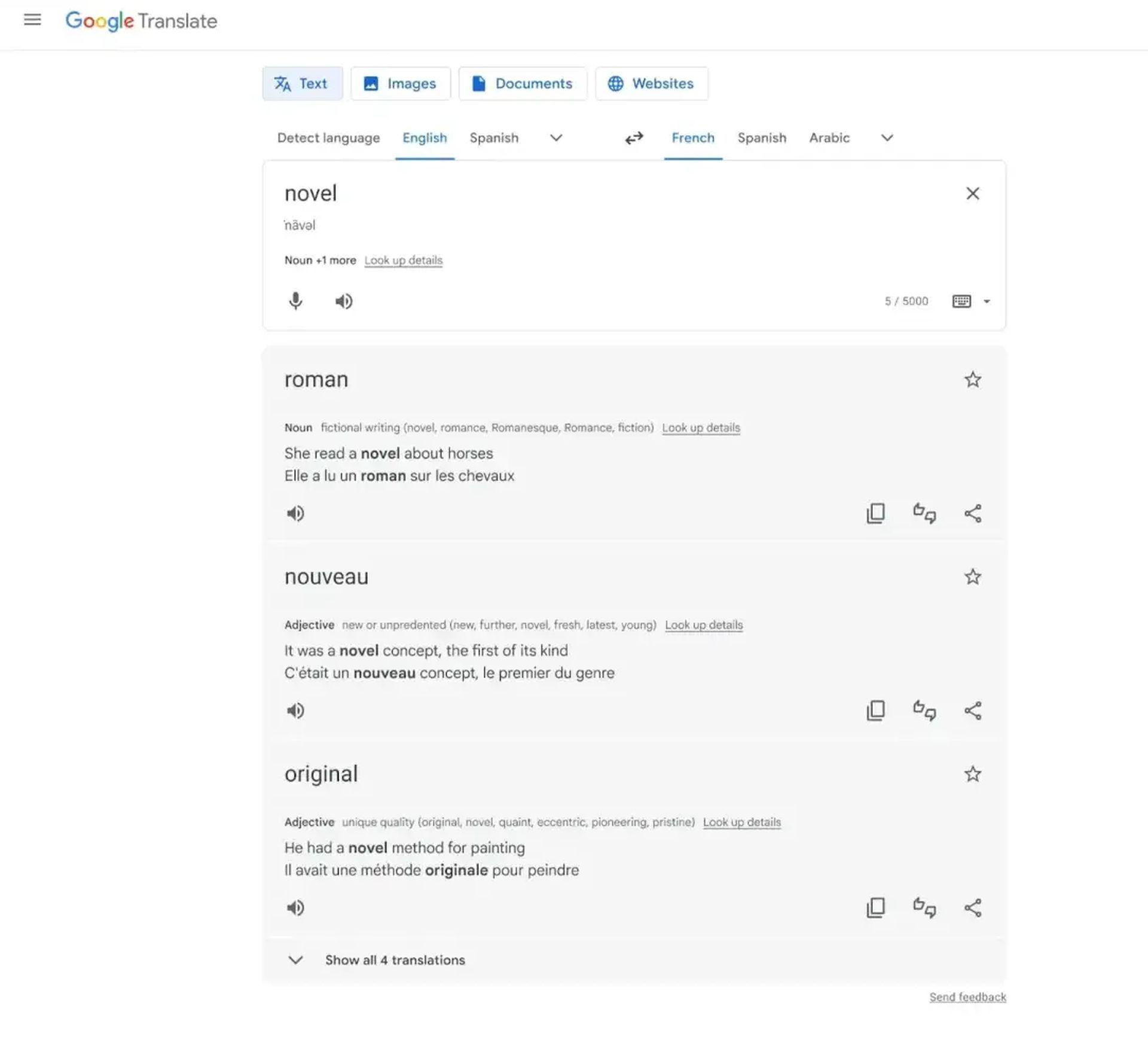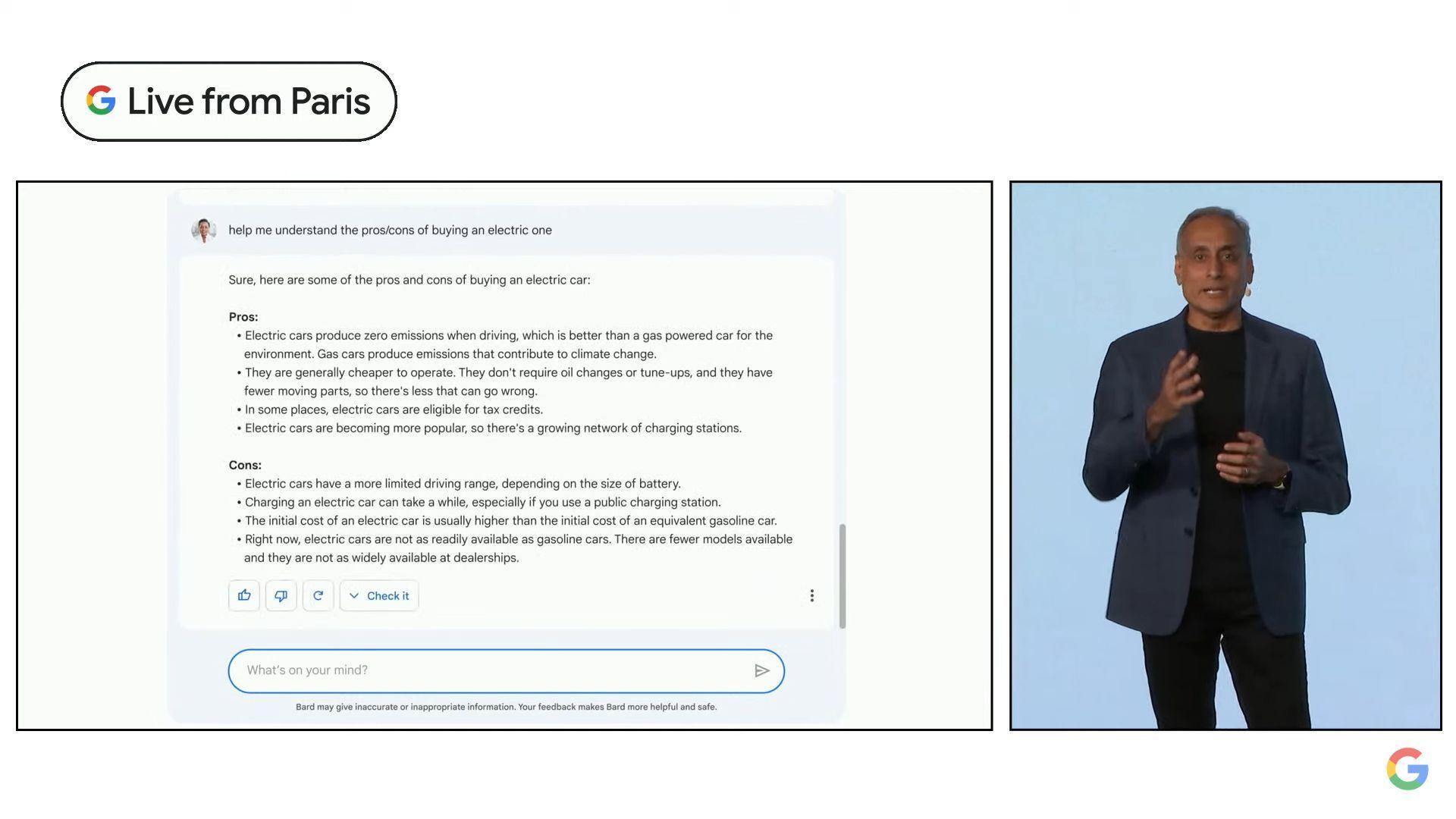During the Google Live from Paris livestream, the company declined to offer significant insight into its latest conversational AI search tool, Bard, which the LaMDA model powers. The presentation echoed CEO Sundhar Pichai’s recent blog post, offering a measured response to Microsoft’s aggressive approach in the search market, as highlighted by CEO Satya.
Google Live from Paris: What’s new?
Nadella’s recent declaration that “the race starts today” and the company’s intention to “move fast.” In the absence of Pichai, Prabhakar Raghavan, SVP of Google responsible for Search, took the stage to emphasize that search remains the company’s “biggest moonshot” and that the “moon keeps moving.”
However, Google unveiled a suite of upgraded translation offerings during its Live from Paris presentation today. The advancements include enhanced contextual search, a refreshed design for the iOS app, and a revolutionary augmented reality translation function via Google Lens.
Enhanced Google Translate
Google unveiled a suite of upgraded translation offerings during its Live from Paris presentation today. The advancements include enhanced contextual search, a refreshed design for the iOS app, and a revolutionary augmented reality translation function via Google Lens.
Google is enhancing contextual translation in five languages, including English, French, German, Japanese, and Spanish. This improvement entails that words and expressions with multiple interpretations will be translated based on the surrounding text, ensuring a more natural phrasing and utilization of idiomatic expressions. This feature operates similarly to Linguee and Reverso Context.
This updated feature also helps to prevent the use of potentially offensive or derogatory language in a foreign language when fluency is limited. Google stated that this upgrade would be gradually released in the near future, and additional languages will be supported in the months to follow.

In the previous year, Google updated the Android Google Translate app with a refreshed interface adhering to the ‘Material You’ design philosophy. Now, the company is introducing new capabilities, and a redesigned user interface to the iOS app as well. The revamped app features a prominent microphone button at the bottom center, enabling users to input text effortlessly through voice. The iOS app also includes a dynamic font that enhances the readability of translations as they are typed. Furthermore, the new design simplifies the process of selecting languages with fewer taps.
Additionally, the reworked app incorporates gesture controls such as swiping down to access recent translations and holding the language button to swiftly select a frequently used language.
The updated iOS app has also recently introduced offline translation support for an additional 33 languages, including Basque, Corsican, Hawaiian, Hmong, Kurdish, Latin, Luxembourgish, Sundanese, Yiddish, and Zulu.
In September of last year, Google demonstrated a cutting-edge translation feature that blends translated text into the real-world background image seamlessly. This innovation enables translated text to appear as though it is part of the original poster, regardless of the language in it is written in. The company is now implementing this capability on Android smartphones with 6GB or more RAM.
Multisearch and Google Maps upgrades
Furthermore, Google announced the worldwide launch of multisearch, along with upgrades to Maps, including immersive views in five new cities, and an expansion of the quick directions feature to all users.
In a recent blog post, Google expressed its ambition to make its service “an immersive and intuitive map that revolutionizes the way people explore and travel, enabling more informed decisions.” To achieve this aim, the company will establish a new augmented reality navigation tool, among other initiatives, enabling users to locate everything in their vicinity.

Thanks to a new addition to the app, users can simply click on the “Camera” icon in the top right of their screen and point their phone at buildings, signs, or storefronts to discover what is nearby. This feature is currently available in Paris, London, New York, Los Angeles, San Francisco, and Tokyo and will soon be rolled out to other cities globally.
However, augmented reality will not be limited to outdoor use. Google mentions that over 1,000 shopping centers, airports, and stations, specifically in Paris, will have access to the “Live View” tool. It remains to be seen if all locations will be covered, particularly the metro in the capital. This tool has already been in existence since 2021 in the United States, Zurich, and Tokyo and enables users to point in the direction of the nearest toilets or taxi stands.

In selected cities, Google Maps will provide users with a 3D virtual view and details of public buildings, allowing them to preview a particular location, such as finding the correct entrance. According to Tech & Co, the Paris town hall is in discussions with Google to implement this service in the capital.
Better features for EVs
Google Maps has also made improvements for electric vehicle (EV) users. When searching for driving directions, the mapping service will display the most optimal route taking into account traffic and the EV’s battery level. Google Maps will also allow users to find charging stations with fast chargers and nearby supermarkets equipped with EV charging terminals. This feature aims to keep up with the growing adoption of EVs in the automotive industry.

Google Bard vs ChatGPT & Microsoft
Google Bard is based on a lighter version of LaMDA and TPUs, while OpenAI’s ChatGPT uses GPT-3 and GPUs. TPUs are optimized for matrix operations in deep learning, while GPUs provide versatility in terms of computation operations.
This means that there is a risk that the information generated by Bard may not be reliable or accurate and could potentially spread false information. On the other hand, ChatGPT’s answers are based on its training data, which was filtered and controlled during the model’s creation process, reducing the risk of generating harmful or false information. However, this also means that the information provided by ChatGPT may not be up-to-date. It’s important to consider these trade-offs when deciding which technology to use.
It seems that Google’s decision to keep its AI technology secret for a long time was due to the potential for it to adopt negative traits from the web, such as misinformation and racism. However, with Microsoft’s recent efforts to challenge Google’s dominant market position in online search with its own generative AI technology ChatGPT, Google has been forced to reveal its own AI technology, Bard.
The difference between the two technologies is that Bard can generate answers from information found on the web, while ChatGPT can only rely on its training data. However, its advantage of Bard also comes with the potential for negative traits.
“The race starts today, and we’re going to move and move fast. Most importantly, we want to have a lot of fun innovating again in search, because it’s high time,” Nadella stated.
According to recent market data, Microsoft’s Bing holds a relatively small share of the online search engine market at 3.03%, while Google dominates with a 92.9% usage rate among consumers. However, during a recent press conference, Microsoft showcased how the integration of AI into its search engine, Bing, has the potential to challenge the status quo in the online search market. The demonstration involved asking Bing to provide a recommended five-day itinerary for Mexico City, a complex query that current search engines are unable to answer. To the surprise of the audience, Bing was able to deliver a response.
In addition to its search engine Bing, Microsoft has also integrated ChatGPT into its Edge browser, expanding its capabilities with two new features: “chat” for summarizing webpages and answering questions, and “compose” to assist users in text generation for tasks such as writing emails. The launch of ChatGPT reportedly prompted Google to go into “code red” in December of last year, leading the search and advertising giant to accelerate its efforts to catch up and maintain its dominance in the market with the development of Google Bard.
The uptake of ChatGPT was remarkable, reaching one million users just five days after its launch. This is a much faster adoption rate compared to other popular applications such as Facebook, which took ten months, and Instagram, which took 2.5 months, to reach the same milestone.
Even Apple’s iPhone, which is considered to have had a successful launch, took 74 days to sell its one-millionth unit. By January 2023, ChatGPT had amassed 100 million users who made a total of 590 million visits to the AI tool, making it the fastest-growing application to reach such a high user base. Analysts have stated that in their 20 years of observing the internet space, they have not seen such rapid growth in a consumer internet app.





